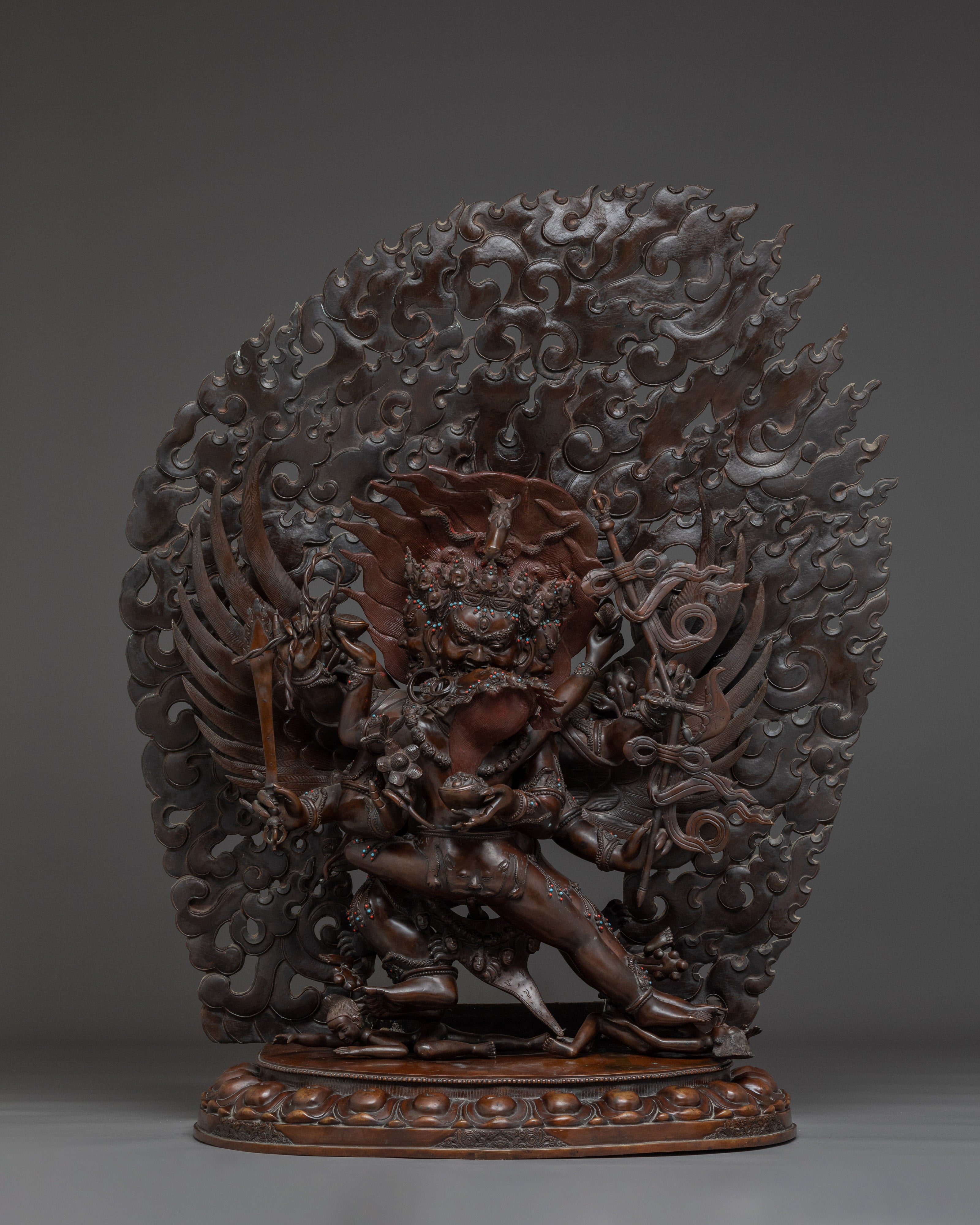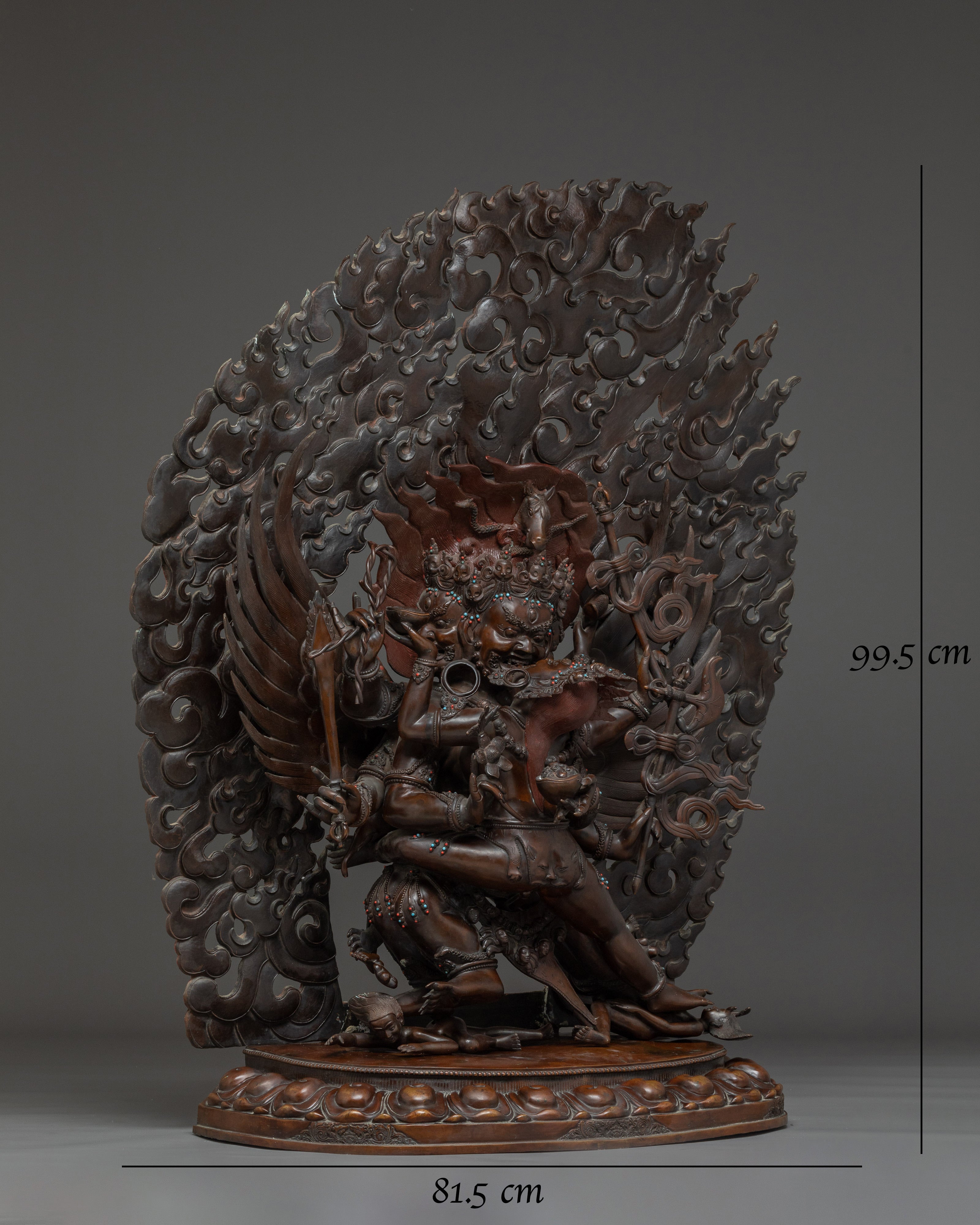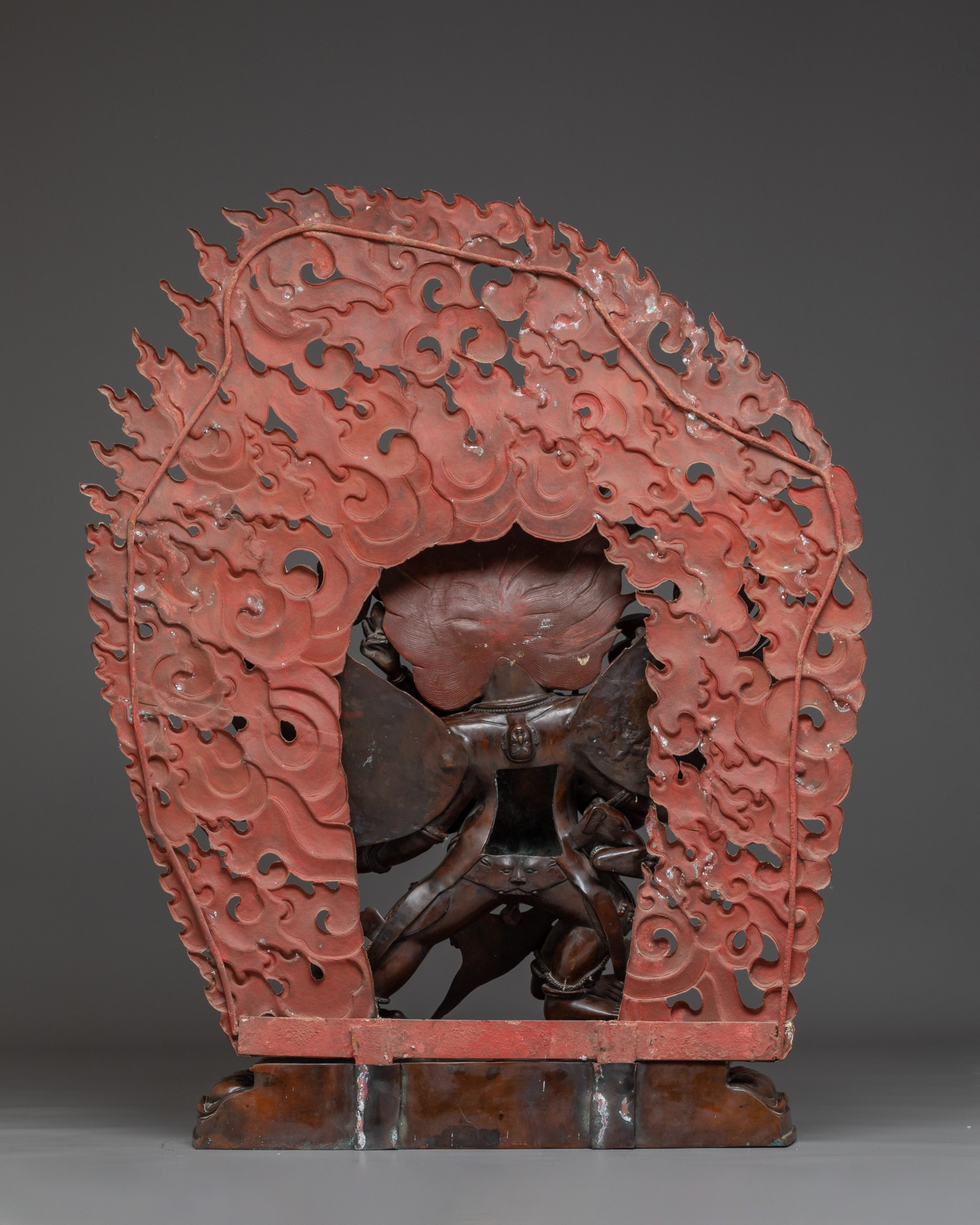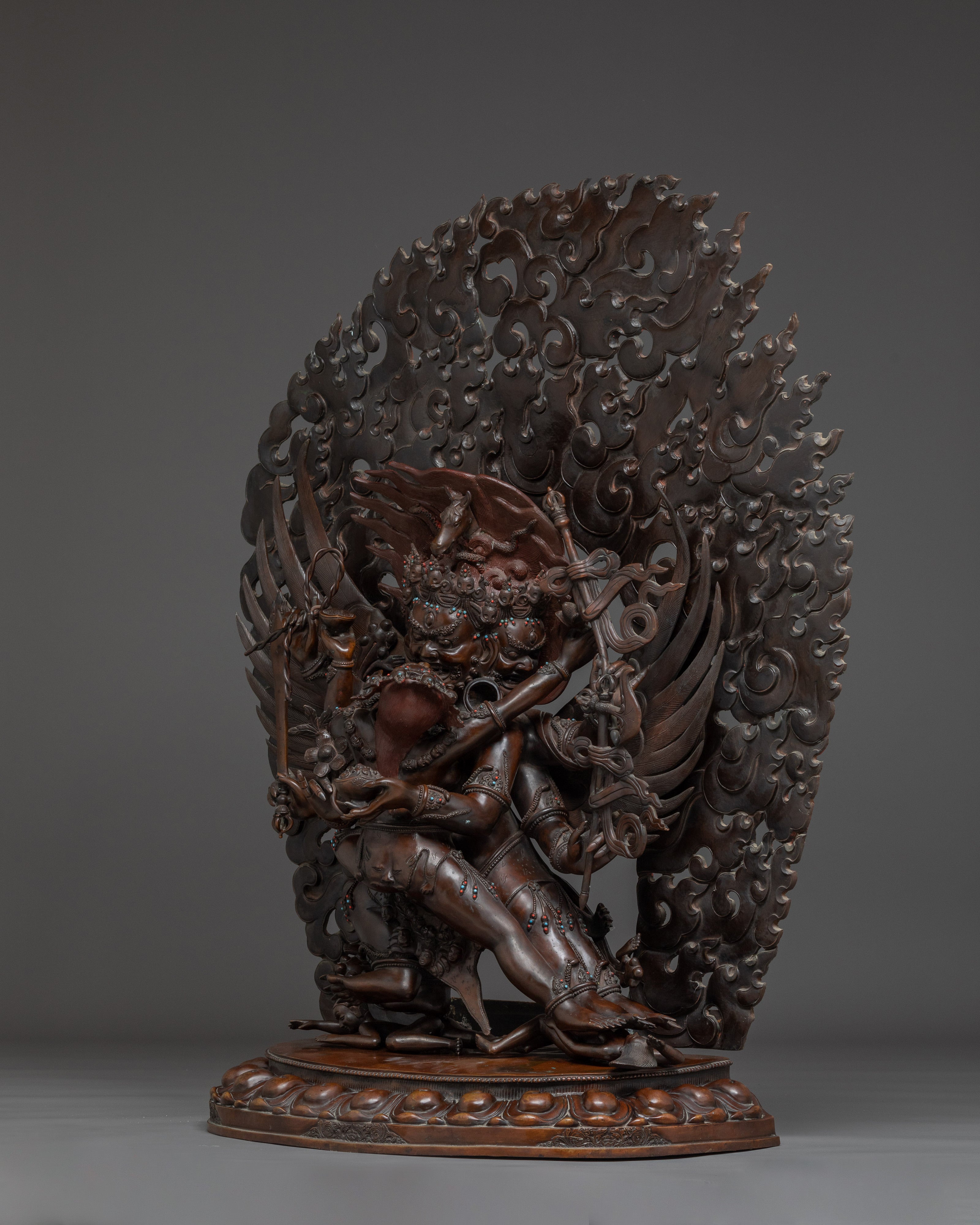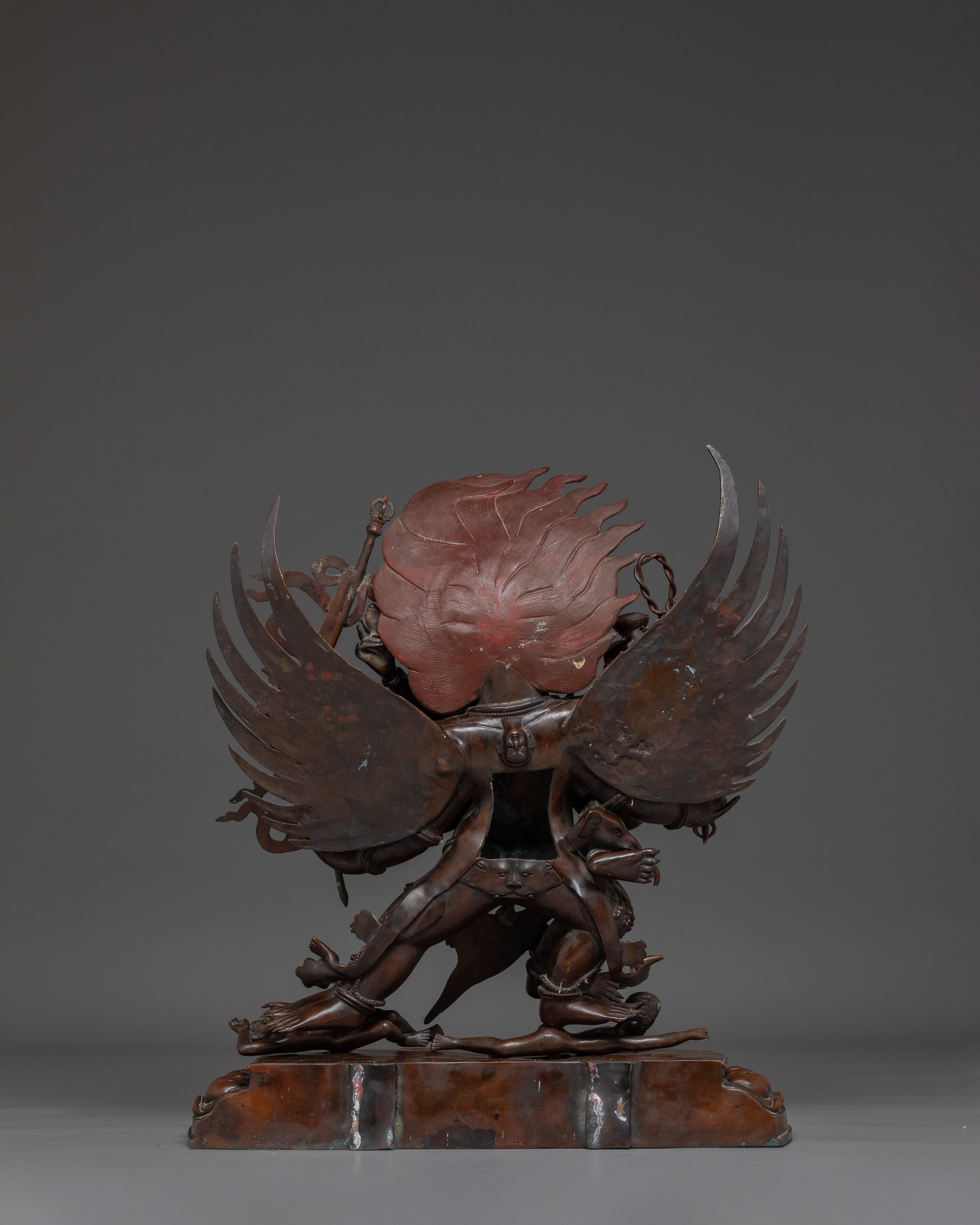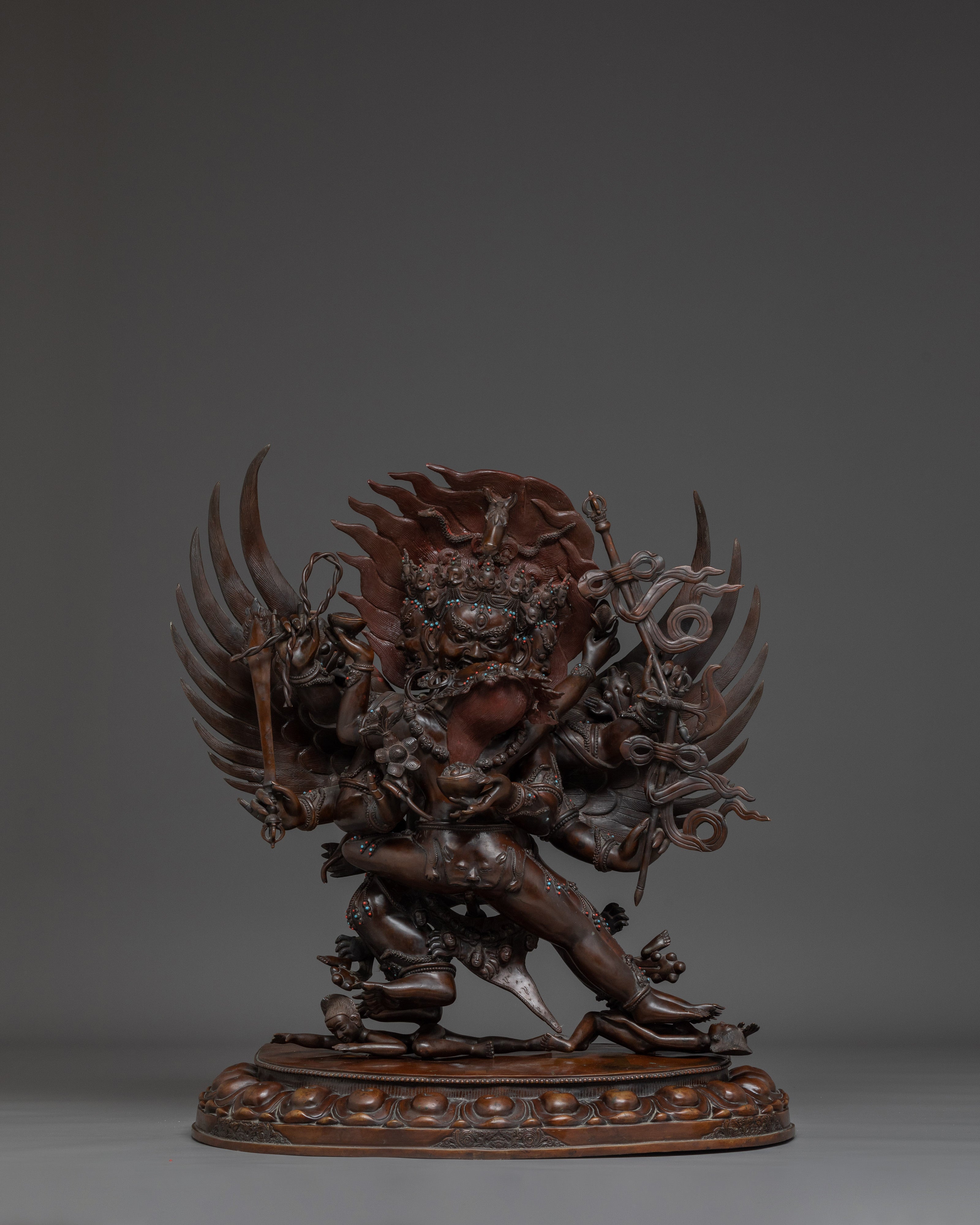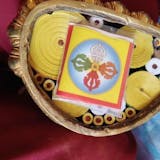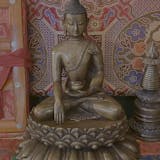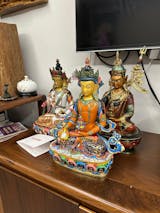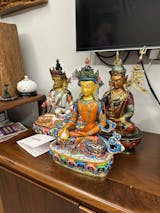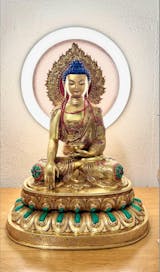The statue of six-armed Mahakala is beautiful beyond my wildest imaginings for beauty, quality of craftsmanship, artistic insight, and overall presence in my life. I have given it "pride of place" in my artist studio and office.
I am deeply indebted to you for all of your assistance and guidance.
The statue of Six-Armed Mahakala is beautiful beyond my wildest imaginings or expectations for beauty, quality of craftsmanship, artistic insight and inspiration, and overall presence in my life. It is absolutely breathtaking!
Highest quality and a wonderful service. For me the best. Thank you so much!
I requested that my statue be consecrated, and the fees paid covered the purchase of zung (sacred mantra rolls), as well as a donation to Shechen Monastery. I could not be happier with Termatree's customer service to facilitate this for me - above and beyond packaging my purchase - AND to provide me with the opportunity to make an offering to Shechen Monastery.
Shortly after I placed my order Nima began kindly communicating with me. I had requested the statue be consecrated at Shechen Monastery and Nima provided some touching photos of the process with Lama-la, and then my package was on its way. I received the Longchenpa statue yesterday, and was utterly amazed from the moment the DHL package reached my hands. The statue was packed in a highly secured wooden box which, once opened, was further packed full of protective material around the carefully bubble-wrapped statue. The statue itself is far more beautiful than pictured and I feel absolutely honored to now have it on the shrine in my home. Nima and Termatree have my highest praise on all levels, and I fully intend to be a repeat customer of their sacred offerings in the future.
I requested that my statue be consecrated, and the fees paid covered the purchase of zung (sacred mantra rolls), as well as a donation to Shechen Monastery. I could not be happier with Termatree's customer service to facilitate this for me - above and beyond packaging my purchase - AND to provide me with the opportunity to make an offering to Shechen Monastery.
Shortly after I placed my order Nima began kindly communicating with me. I had requested the statue be consecrated at Shechen Monastery and Nima provided some touching photos of the process with Lama-la, and then my package was on its way. I received the Guru Rinpoche statue yesterday, and was utterly amazed from the moment the DHL package reached my hands. The statue was packed in a highly secured wooden box which, once opened, was further packed full of protective material around the carefully bubble-wrapped statue. The statue itself is far more beautiful than pictured and I feel absolutely honored to now have it on the shrine in my home. Nima and Termatree have my highest praise on all levels, and I fully intend to be a repeat customer of their sacred offerings in the future.
This statue is even much more beautiful and impressive than expected. A really auspicious presence. Thank you so much! Pekelder
There are so many places to purchase a statue of Shayamuni, and Termatree has so many options. But this particular one drew me in- as it is said- "the statue chooses you". From the minute I made the purchase, they reached out and had the utmost care for my relationship with the statue, not just the statue itself. They offered consecration with monks they work with, and this process was also highly documented and communicated. Everything about Termatree is professional and high quality. I appreciate their communication, the quality of the product, and the care for the piece and my relationship with it. A really positive experience all around. Thank you, Termatree!
Termatree is lovely to work with. From the moment you purchase, you are immediately cared for and they will reach out and offer consecration of the statue. Rather than a simple upsell, they care for your piece and make sure that if the statue is intended for spiritual use that it receive appropriate and thorough attention. They sent photos and videos of the consecration process and updates on its journey. Truly a great attention to customer care and to the quality of their products. Very appreciated. The statue arrived in perfect condition and in a custom wooden box. I couldn't be happier with Termatree, I am so happy to have made the purchase through them.
Beautiful statue. Very well made and a true work of art. Superb communication and service, fast delivery.
Wonderful statue, perfekt service, fast delivery - excellent! Thanks a lot😀
I'm Vietnamese, and this is my first time buying from this shop. When I received the beautiful statues from DHL, I had a hard time opening the package because you guys packed them so carefully, haha.
I'm very satisfied with Termatree's service.
I'm Vietnamese, and this is my first time buying from this shop. When I received the beautiful statues from DHL, I had a hard time opening the package because you guys packed them so carefully, haha.
I'm very satisfied with Termatree's service.
I’m very happy with my acquisition, the statue is really beautiful and inspiring. It was perfectly packed and arrived quickly. Thank you Nima for your steadfast accompaniment throughout the whole process, it made for a personal experience. I would wholeheartedly do business with Terma Tree again. Highly recommended!
The design is fantastic, I'm extremely satisfied.
Top-notch customer service from Nima. She was incredibly helpful, guided me through the entire process, and kept me updated on the statue’s availability despite a very busy period. It was a gift and my family absolutely loved it—truly spectacular artistry.
Top-notch customer service from Nima. She was incredibly helpful, guided me through the entire process, and kept me updated on the statue’s availability despite a very busy period. It was a gift and my family absolutely loved the Vajrapani colourful copper statue—truly spectacular artistry.
I can not thank Nima and the Termatree team enough for the wonderful service and the stunning work of art and blessed object. Nima was the most responsive, communicative, and helpful person one could ask for when buying a sacred item. The beauty and craftsmanship of my sculpture inspires me to practice every day.
Wonderful Statue. Quick delivery.Help and kind support during the process. Thank you.
Beautiful statue and very fast shipping with superb package, customer service was great as well.
Amazing. Delivery without any problems. Thank you so much for your kind support.
Wonderful statue, amazing artwork - very fast delivery and friendly service - Thank you so much!
Arrived quickly and packaged perfectly. This is a great seller who supports local artisans with qhkty products.
TermaTree is an excellent source for high-quality Dharma items. Thanks to their representative Nima, I was able to have my rupa consecrated by the monks at Sechen Monastery. I highly recommend their products and services. Gonpo Jack Salamone

